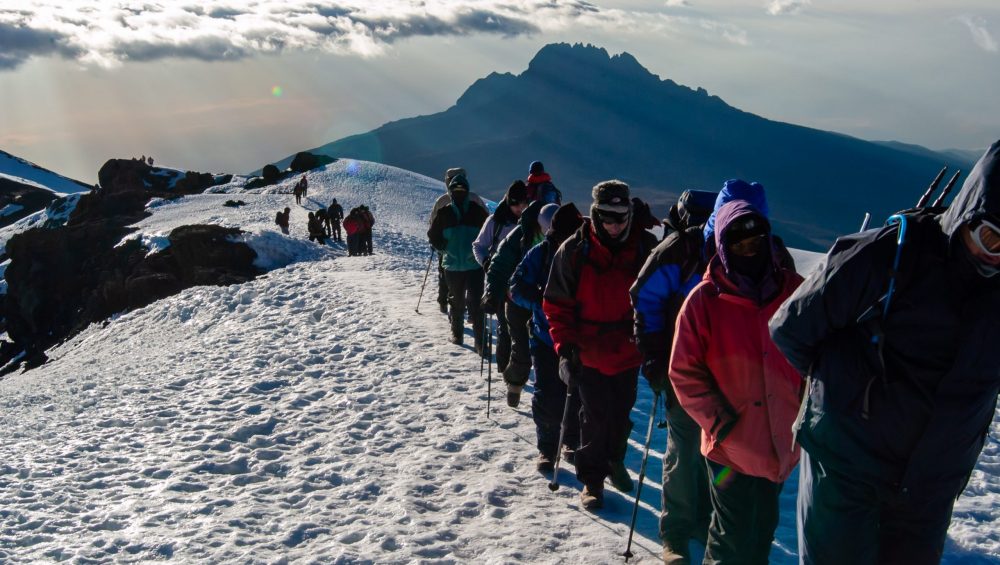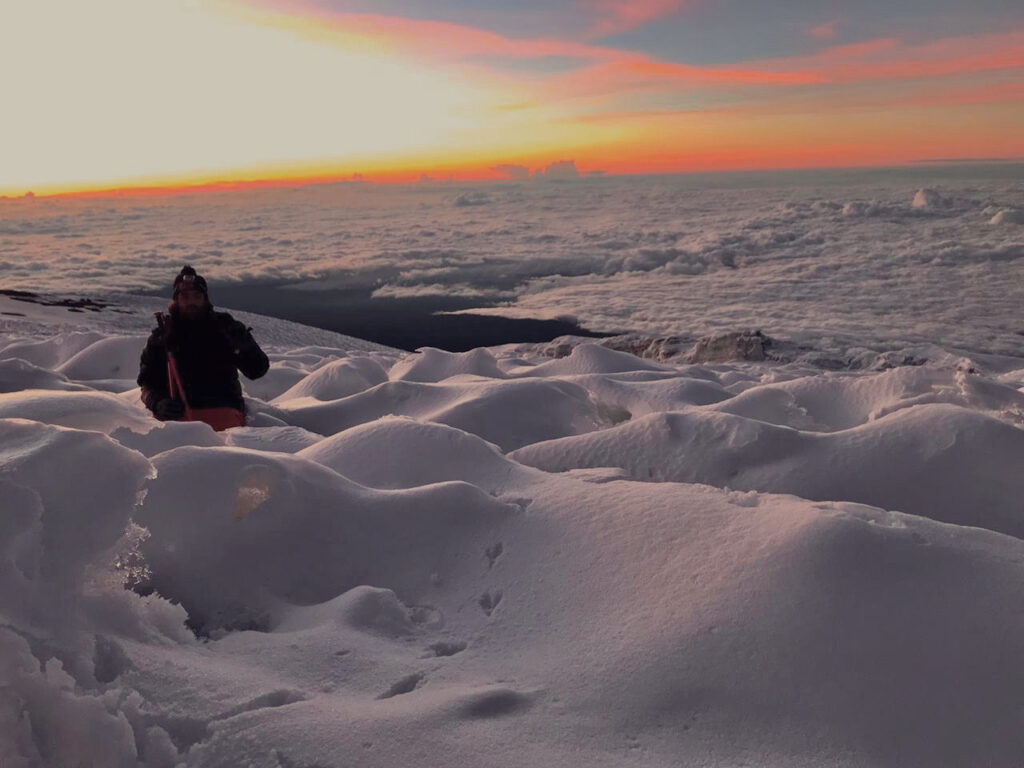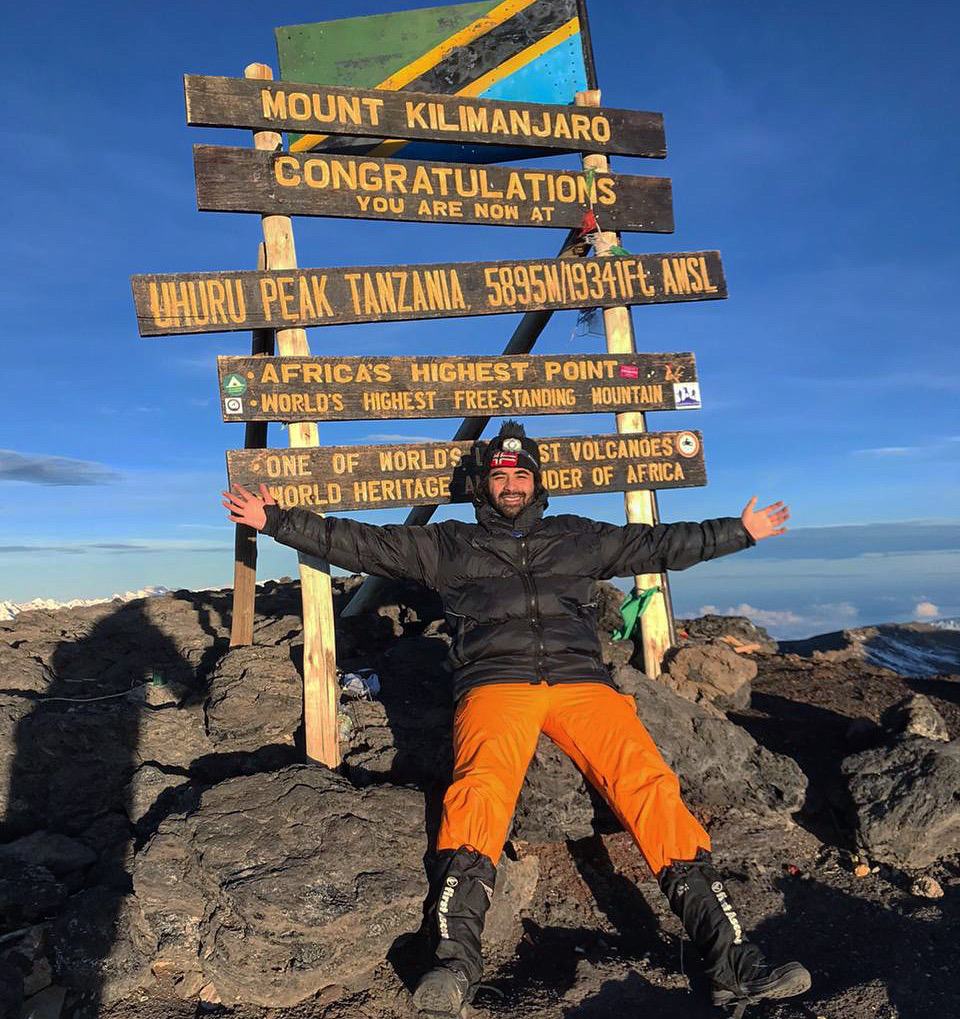If you happened to meet people who have successfully climbed and reached the top of Mount Kilimanjaro, they will probably say “Kilimanjaro is the hardest thing I’ve ever done especially the summit night”. And couple years later you will see the same person bringing friends along with him to do it again. We know by experience that the hardest part of Climbing Kilimanjaro is the summit night. You will face the very cold weather with temperature going under -15is the coldest with 49% less oxygen and a descent of nearly 6,870ft. So how hard is it to climb Mount Kilimanjaro ? There is no yes it hard or no it’s not hard, we would say that it depends on many factors, and most of the time is very individual. Let’s dig into those factors to give you a better indication on how hard it is to climb Mount Kilimanjaro.
The Facts About Climbing Mount Kilimanjaro
It’s impossible to say exactly how hard it is to climb Mt. Kilimanjaro because there are so many factors, including your fitness level, how long you’ve been preparing for your trip and even your travel company (some are better than others). However, we can tell you that Mount Kilimanjaro should not be taken lightly. This climb requires both physical and mental strength. And while there aren’t any technical aspects to worry about on Kili, difficulty level lies in its altitude—which means you must be prepared for life at high altitudes. In fact, acclimatization is one of Kili’s most critical components.
The Best Route for Climbing
Planning your route for climbing Mount Kilimanjaro can be difficult. Climbing routes are influenced by several factors, including weather conditions, timing, ability level and more. That’s why it’s important to select a climb that matches your experience and ability level. For example, a beginner may want to start off with an easier climb like Marangu, which takes between five and six days to complete. Climbers who have climbed other peaks like Denali or Elbrus may choose an alternative route known as Rongai Route; it’s one of the easiest but still offers stunning views.
How to deal with sickness Altitude on Mount Kilimanjaro
One of the toughest challenges of climbing Kilimanjaro is coping with the high altitude. Adjusting to the thin air while trekking long distances sets Kilimanjaro apart from your average hiking adventure. Altitude training is a crucial part of your preparation, although its effectiveness can vary.
Opting for a longer route, spanning over six days or more, provides your body with ample time to acclimatize. It also allows for necessary rest and recovery, without the pressure of rushing to cover the miles. Remember, it’s important to maintain a slow pace during the climb. Your guide will often remind you with the Swahili phrase “Pole pole,” meaning “slowly slowly.” By conserving your energy and avoiding exhaustion, you increase your chances of proper acclimatization. Remember, it’s not a race!
If needed, you can discuss with your doctor the possibility of taking Diamox, a medication that aids acclimatization. A prescription is required for it.
Unpredictable Weather Conditions
The weather on Kilimanjaro can be highly unpredictable, adding another layer of challenge to the climb. Climbers may encounter extreme temperatures, ranging from scorching heat during the day to freezing cold at night. Heavy rainfall and strong winds are also common on the mountain. It is essential for climbers to pack suitable clothing and equipment to protect themselves from the elements and ensure their safety throughout the journey.
Mental Stamina and Determination
Climbing Kilimanjaro is not only a physical test but also a mental challenge. The climb can be mentally demanding, requiring perseverance, determination, and a positive mindset. As climbers face fatigue, discomfort, and the possibility of altitude sickness, maintaining mental strength becomes crucial to overcome the obstacles that arise along the way. Proper mental preparation, such as visualization and goal setting, can greatly enhance a climber’s chances of success.
Safety Precautions and Expert Guidance
Ensuring safety during a Kilimanjaro climb is paramount. It is highly recommended to climb with an experienced guide or join a reputable trekking company. Expert guides have extensive knowledge of the mountain, including its routes, weather patterns, and safety procedures. They can provide valuable guidance and support throughout the journey, increasing the chances of a safe and successful climb.
Your Physical Fitness
Your physical fitness is another essential aspect to consider. While you don’t need to be an ultra-marathon runner, you should be prepared to hike uphill for multiple hours each day, carrying a weighted backpack. Keep in mind that the slow pace of the climb might make you think it’s too easy if it weren’t for the altitude!
Our advice is to strive for the highest level of fitness possible, after consulting with your doctor.
If you do have any questions about how hard it is to climb Kilimanjaro? Our expert guide are ready to answer them for you! Have you climbed Kilimanjaro ? pleas drop your experience and share your personal advise !








